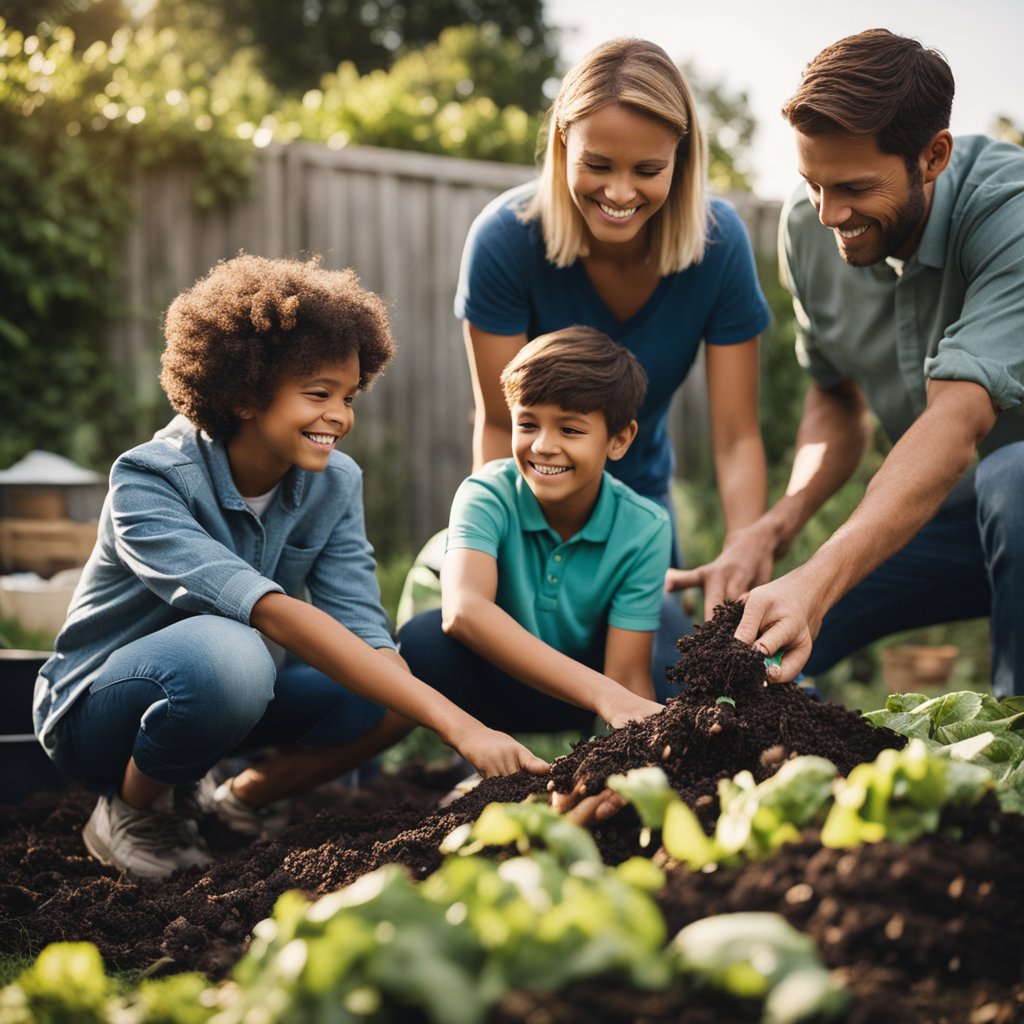Tips for Conserving Water at Home: Simple Strategies for Everyday Efficiency
By Alex Reynolds |

Tips for Conserving Water at Home: Simple Strategies for Everyday Efficiency
Every home can benefit from simple water conservation tips that not only help the environment but also reduce utility bills. Implementing changes like fixing leaks, using water-saving fixtures, and being mindful of water usage during daily activities can make a significant impact. With increasing awareness about the importance of saving water, more people are looking for practical ways to make a positive change.
One effective approach is to assess water usage patterns at home. By understanding where most water is being consumed, individuals can identify opportunities for savings. Simple adjustments, such as shorter showers and running dishwashers only with full loads, can lead to impressive reductions in water usage.
Additionally, adopting habits like collecting rainwater for gardening or utilizing mulch can further enhance water conservation efforts. These small steps can accumulate to create substantial benefits, promoting a more sustainable lifestyle. In this article, readers will discover various strategies to conserve water effectively at home.
The Importance of Water Conservation
Water conservation is crucial for maintaining the health of ecosystems, supporting economic stability, and promoting sustainable living practices. Understanding its importance can motivate individuals to adopt practical water-saving habits at home.
Environmental Benefits
Conserving water helps protect local ecosystems. When households use less water, there is less demand on rivers, lakes, and aquifers. This can lead to healthier habitats for wildlife.
Reduced water consumption also means lower energy use. Less energy is needed for water heating and treatment, which in turn decreases greenhouse gas emissions.
In areas experiencing drought, every drop counts. Saving water can help maintain local flora and fauna, ensuring biodiversity thrives. Strategies such as fixing leaks and using water-efficient appliances can significantly contribute to this goal.
Economic Advantages
Water conservation can lead to lower utility bills. When families reduce their water use, they are often rewarded with reduced costs. This encourages budget-friendly habits while benefiting the environment.
Moreover, conserving water helps municipalities save money on infrastructure. Without the need to expand water supply systems, communities can redirect funds to other crucial services.
Investing in water-efficient appliances may require an upfront cost, but this investment pays off through long-term savings. Low-flow fixtures and smart irrigation systems can significantly lower water waste, making homes more economical.
Sustainable Living
Engaging in water conservation is a vital part of sustainable living. It promotes responsible usage of a finite resource, which is essential as population growth places greater stress on water supplies.
Educating others about water-saving techniques empowers communities. Small changes, like taking shorter showers or collecting rainwater, can collectively have a large impact.
Implementing water conservation practices fosters a lifestyle that values resources. This mindset encourages individuals to consider their environmental impact and strive for more sustainable choices in other areas of life.
Indoor Water Conservation Strategies
Indoor water conservation is crucial for reducing overall household water use. By focusing on efficient fixtures, timely repairs, and daily habits, individuals can contribute significantly to water savings.
Efficient Water Fixtures and Appliances
Using water-efficient fixtures and appliances is one of the best ways to save water indoors. Upgrading to Low-Flow Showerheads can reduce water usage by approximately 30%. These fixtures typically use no more than 2.5 gallons per minute compared to older models that may use up to 5 gallons.
Toilets are another significant water user. Installing a High-Efficiency Toilets (HETs) can save an average of 20-60% more water than standard models. Many newer toilets use only 1.28 gallons per flush.
Furthermore, modern dishwashers and washing machines are designed to use less water while maintaining cleaning efficiency. Looking for appliances labeled with the WaterSense label ensures these appliances save water while providing adequate performance.
Leak Detection and Repair
Detecting and repairing leaks is essential for conserving water. Even small leaks can waste gallons of water each day. A dripping faucet, for instance, can waste around 3,000 gallons a year.
Regular checks of faucets, toilets, and hoses can help identify leaks early. Common signs include water stains, mold, and sounds of running water when fixtures are off.
Homeowners should consider using a water leak detection system or smart meters that notify them of unusual water usage patterns. Promptly repairing leaks not only saves water but also reduces water bills, making it a cost-effective strategy.
Water-Saving Habits in Daily Routines
Daily habits play a significant role in water conservation. Simple actions, like turning off the tap while brushing teeth, can lead to substantial savings over time.
Shortening showers by a few minutes can conserve several gallons of water. For example, cutting a 10-minute shower to 5 minutes saves roughly 12.5 gallons if using a low-flow showerhead.
Additionally, only running dishwashers and washing machines with full loads maximizes water efficiency. For rinsing fruits and vegetables, using a bowl of water instead of running water can save even more.
By adopting these practical habits, individuals can contribute to a meaningful reduction in indoor water use.
Outdoor Water Use Reduction
Reducing outdoor water use is crucial for conserving resources. Simple changes in gardening, landscaping, and irrigation practices can lead to significant savings.
Gardening and Landscaping Techniques
Choosing the right plants can make a big difference in water use. Native and drought-resistant plants require less water once established. This helps conserve water and supports local wildlife.
Creating a mulch layer around plants retains moisture and prevents weeds. Organic mulch, like wood chips or straw, is effective. It also adds nutrients back into the soil.
Grouping plants with similar water needs helps manage water better. This ensures that no plant is over- or under-watered. Having these plants close together allows for efficient watering practices.
Using decorative stones or gravel in garden beds reduces the area that needs watering. This design approach conserves water while enhancing the garden’s appearance.
Encouraging deep root growth in plants results in less frequent watering. This can be achieved by watering deeply but less often, which encourages roots to reach further into the soil.
Irrigation and Watering Best Practices
Adjusting irrigation systems is essential for effective water use. Timers and rain sensors can help homeowners ensure they only water when necessary.
Drip irrigation is a highly efficient method. It delivers water directly to the plant’s roots, reducing evaporation and runoff. This system uses less water compared to traditional sprinklers.
Watering early in the morning or late in the evening minimizes evaporation. During hot parts of the day, water can easily be lost to the sun.
Regularly checking irrigation systems for leaks helps save water. Even small leaks can waste a significant amount if left unnoticed.
Using a rain barrel can collect rainwater for outdoor use. This captures runoff and provides an eco-friendly watering option for gardens. It also reduces reliance on treated water from municipal sources.
Involving the Community in Water Preservation
Community involvement plays a crucial role in water preservation. Through educational initiatives and community-based programs, people can work together to reduce water usage and promote sustainable practices.
Educational Initiatives
Educational initiatives help raise awareness about the importance of water conservation. Schools can introduce programs that teach students the value of water and methods to save it at home. This knowledge can extend to families, encouraging them to adopt water-saving habits.
Workshops and seminars can also be organized in neighborhoods. These gatherings can cover topics such as fixing leaks, using water-efficient appliances, and creating rain gardens. Providing residents with practical skills empowers them to make meaningful changes in their daily lives.
Local governments and organizations can distribute flyers and newsletters with tips and statistics about water usage. The more informed the community is, the more likely they are to participate in conservation efforts.
Community-Based Water Saving Programs
Community-based water-saving programs create a strong network of support. These programs can include group activities like community clean-up days focused on local waterways. Participants learn about the impact of pollution and can help enhance the local environment.
Incentive programs motivate residents to reduce their water usage. For example, local authorities can offer rebates for water-saving devices or rain barrels. Such incentives encourage participation and demonstrate a commitment to conservation.
Neighborhood competitions can also stimulate interest. Residents can compete to see who can reduce their water usage the most over a set period. This friendly competition fosters collaboration, making saving water a collective effort.
Innovations in Water Conservation Technology
Innovative technologies are playing a key role in water conservation at home. They offer practical solutions that can lead to significant reductions in water use.
1. Low-Flow Fixtures:
Low-flow showerheads and faucets reduce water flow without sacrificing pressure. This helps to lower water bills while still providing a comfortable experience.
2. Smart Irrigation Systems:
These systems use sensors to monitor soil moisture levels. They adjust watering schedules based on weather conditions, preventing overwatering and reducing waste.
3. Rainwater Harvesting Systems:
These systems collect rainwater for non-potable uses like irrigation. They reduce the need for treated tap water, providing an eco-friendly alternative.
4. Greywater Recycling:
This technology reuses water from sinks, showers, and washing machines. Systems can be designed to filter and distribute greywater for irrigation purposes.
5. Smart Water Meters:
These devices provide real-time water usage data. They help homeowners track consumption patterns and find ways to cut down on waste.
6. Water-Saving Toilets:
Modern toilets use less water per flush. Dual-flush models allow users to choose the appropriate level of water, saving more when possible.
Investing in these technologies can lead to effective conservation efforts. Each innovation addresses a specific aspect of water use, making it easier for households to participate in saving water.
Long-Term Water Conservation Planning
Long-term water conservation planning is essential for sustainable resource management. It focuses on strategies that can significantly reduce water usage over time.
Key elements include:
- Assessment of Current Usage: Understanding water consumption patterns helps identify waste and inefficiencies.
- Education and Awareness: Promoting water-saving habits encourages residents to adopt better practices.
- Infrastructure Improvements: Upgrading pipes and fixtures can prevent leaks and minimize water loss.
Effective Strategies:
- Water-Efficient Appliances: Installing low-flow faucets and toilets reduces water use without sacrificing performance.
- Landscaping Choices: Using drought-resistant plants can limit the need for irrigation.
- Rainwater Harvesting: Collecting rainwater for outdoor use helps to conserve municipal water supplies.
Behavioral Changes:
- Encouraging shorter showers and turning off taps while brushing teeth can lead to significant savings.
- Implementing community challenges can motivate households to reduce consumption.
Long-term planning involves setting clear goals and regularly reviewing progress. This continuous approach not only conserves water but also fosters a culture of responsibility within communities. Adopting these practices creates a resilient framework for future water challenges.
For instance, studies have shown that communities with active conservation programs use less water than those without.
Frequently Asked Questions
Water conservation at home involves understanding effective methods, daily practices, and available technologies. Addressing common questions can help households implement successful strategies for saving water.
What are the most effective methods to reduce water usage in the home?
Some of the most effective methods include fixing leaks, installing low-flow fixtures, and using drought-resistant landscaping. Reducing shower times and running dishwashers or washing machines only with full loads also significantly decreases water usage.
Which simple practices can one adopt to save water on a daily basis?
Individuals can adopt simple practices like turning off the tap while brushing teeth, taking shorter showers, and using a broom instead of a hose for cleaning driveways. Collecting rainwater for gardening is another easy way to conserve water.
How can households implement water conservation in their daily routines?
Households can set a schedule for regular maintenance, such as checking for leaks and cleaning faucet aerators. They can also encourage family members to be mindful of water use when washing hands or preparing meals.
What steps can individuals take to minimize water waste in domestic settings?
To minimize water waste, individuals should monitor their water bill for unusual spikes, which may indicate leaks. Additionally, they can educate themselves on water-efficient practices and involve others in their efforts to conserve water.
Are there water-saving appliances that can help in conserving water at home?
Yes, there are various water-saving appliances available, such as high-efficiency toilets, showerheads, and dishwashers. These appliances can significantly reduce water use without sacrificing performance.
How can behavior changes contribute to water conservation efforts in a residential area?
Behavior changes, such as being aware of individual water use and participating in community conservation programs, can have a positive impact. When residents collectively commit to saving water, the overall demand decreases, benefiting the entire community.


